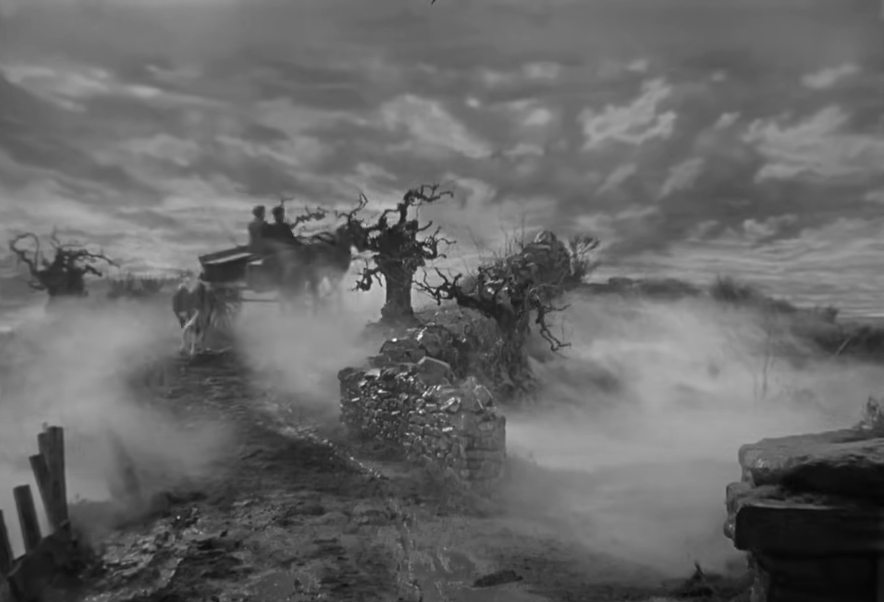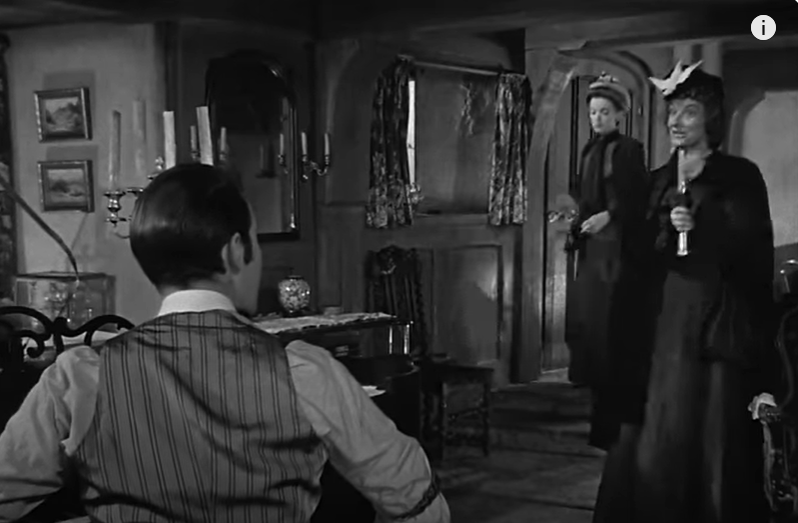This will be a movie review from an author’s or writer’s perspective. The name of the movie is Ladies in Retirement and it was filmed in 1941, produced by Columbia Pictures, and directed by Charles Vidor. The writers for this film or script were Garrett Fort and Reginald Denham.
I saw it on YouTube at the below link, but if it's no longer on YouTube, you can find it on JustWatch which has all the movies.
 The movie starred Ida Lupino, who played the starring role as Ellen Creed. She was an English actress born in 1918 but made most of her movies in the United States. As a point of interest, she came from two generations of theater people, but she did start her own production company in the midst of the Hollywood Studio system. That was pretty daring in those years for a woman if you ask me.
The movie starred Ida Lupino, who played the starring role as Ellen Creed. She was an English actress born in 1918 but made most of her movies in the United States. As a point of interest, she came from two generations of theater people, but she did start her own production company in the midst of the Hollywood Studio system. That was pretty daring in those years for a woman if you ask me.

The movie also starred Louis Hayward, who was married to Ida Lupino during the filming of this movie. He played Ellen Creed's long lost nephew by marriage. He played a charming, thieving, gigaglo type and he aced the part.

Another character actress who outdid herself was Isobel Elsom, who played Leonora Fiske, an old retired showgirl who was "kept" by several men of her day. I’m not an expert on acting, but in my opinion, she stole the movie. She is a great study for writers of a rich character who moves the plot along and was great comic relief as well. Between her facial expressions, the way she moved, the singing, the scoffing, the hand-waving, and lording over her handmaidens, she was a riot.
SHORT MOVIE PLOT SUMMARY - NO SPOILERS
 As the story opens, we learn that Ellen Creeds' family falls on hard times and she winds up being a handmaiden of sorts to this ex-chorus girl Leonora Fiske who now owns their family home. Ellen has been reduced to a common servant. (Regina on screen)
As the story opens, we learn that Ellen Creeds' family falls on hard times and she winds up being a handmaiden of sorts to this ex-chorus girl Leonora Fiske who now owns their family home. Ellen has been reduced to a common servant. (Regina on screen)
Ellen gets a letter threatening to throw her two sisters out of their living arrangement if she cannot get them settled. At the same time, Mrs. Fiche gives Ellen an assignment to go to London to pass a note to a Lord that she knows.
Ellen manipulates a little bit and gets Mrs. Fiche to agree that her sisters can come for a few days visit. But Ellen secretly knows she will be bringing her sisters back to live there.
While she is gone, her long lost nephew shows up needing money. All of this family dysfunction falls onto Ellen's shoulders and the noir part of the movie is about what happens when the stress gets to be too much. Slide 6

So what can an author learn from watching ladies in retirement? Let’s look at the atmosphere.

Atmosphere: There are great shots that give a very gothic atmosphere, including the horse and cart ride, as well as the layout of the mansion house Leonora and Ellen live in. New authors can slide into the ‘white room syndrome’ from forgetting about giving the characters a stage and a background. This is a great movie to steal a few stills from and write up the descriptions. This exercise will build a roster of backdrops and stages in your imagination.
Scenery/Set Descriptions: You can tell that each shot in this movie was set up and framed by the director because each scene filled up the entire shot. Unlike many modern movies that go from one closeup to the next, this movie shows the actors acting across a room, interacting with each other, each one hitting their marks and interacting with props. It can help any new writer learn about giving the characters movement within the scene at the same time they are delivering their lines and moving the action forward.
Costuming/Historical Anchoring: The next area for writers to focus on is costuming and how the film was anchored in time. This particular film was anchored ‘in the olden days’ but there was not one specific time period mentioned. The long dresses, bun hairstyles, Fiona’s shawl, and the nephew’s clothing and manners were enough to anchor this film in a generic ‘olden times’. It’s important for a new author to recognize that this anchoring takes place in every scene. There are props and backdrops in every scene that are keeping this a period piece. This is important to learn for writing in general.
Acting/Character Development: The acting was very good and I go into it in a bit more detail in the video below, but the actress who stole the show was Isobel Elsom playing Lonora Fiche. From head to toe, she acted this part and she was so enjoyable.
One writer's lesson from this movie would be how the character of Leonora was made up of her costuming, her movements, her dialogue, the hairstyle, the singing, the bossing of the servants, flirting with the young nephew, the glasses – she used everything from head to toe for this character development. Now, this character may have been this great in the script, but I never saw the actual script. I just know that the actress did an amazing job at creating a fully fleshed out character for this film noir. And when you focus on her actual dialogue, it wasn't enough to create the character that she developed.

The one area that I think was lacking in the movie was the characterizations of the two sisters. The script referred to them as unsettled, but it was unclear as to whether they were just high management or had mental issues.
I know Elsa Lanchester, who played one of the sisters, is a great actress, and she could have made the character so much better, so I'm sure it wasn't an acting issue. It could have been a directorial flaw, or maybe they were limited by the time of the entire movie and decided to clip the sisters’ characters.
But as a novel writer, I saw great potential for two more great characters in the sisters. We are not limited for time the way a scriptwriter is, so the two sisters could have been fully developed and they would have enriched the story even more.

Script, Language & Dialogue: The final focus is the script, the language and dialogue. The script was very good. It was original, concise, tight, and it had a twist at the end. It seemed like an interesting drama at first but then suddenly went noir towards the end, which was unexpected.
I enjoyed the entire movie and I would watch watch this one again. I’m sure I would pick up other things on a second viewing.
RECOMMENDATIONS: If I was asked to recommend a movie to learn about tightening a writer’s scenes, and how to add movement and interest to each scene, it would be this one. The atmosphere in this movie was also a good one, especially if you write gothic, noir or historical fiction.
I would also recommend this movie just for sheer enjoyment. The plot was good enough to hold your interest the entire way. This movie was served p on my YouTube feed as a film noir but the first three quarters of the movie played like an interesting drama. It turned into a film noir as the plot moved along.
MY MOVIE REVIEW THAT COVERS A LITTLE MORE IS BELOW:
